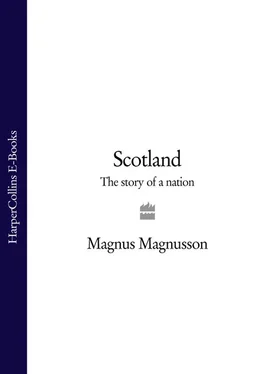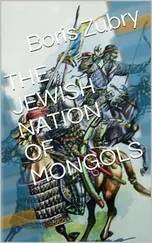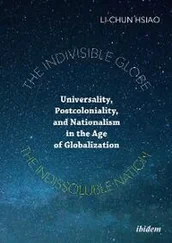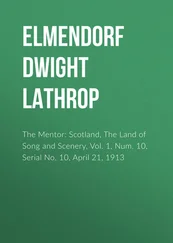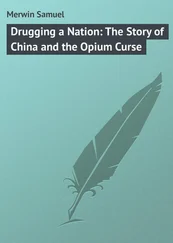By the 1980s it was becoming increasingly difficult to make out the images on the stone (for instance, the heaps of severed heads were barely discernible to the naked eye without recourse to earlier sketches of the stone). Modern atmospheric pollution was creating galloping erosion, which was eating away at the vulnerable sandstone and blurring the detail of the sculptor’s art. Something Had To Be Done: Sueno’s Stone either had to be moved into safe housing (the Old Tolbooth at Forres?) or given a protective covering in situ. The need for a decision was made urgent by plans to alter the line of the A96 from Inverness to bypass the town of Forres: the new road was going to run just a few metres to the north of Sueno’s Stone.
It was not an easy decision. The stone had been discovered, fallen and buried under peat, in 1726, and re-erected in its present position on a new circular pedestal. It had become a prominent part of the landscape of Moray.
Eventually, after much heart-searching, the decision was made to leave the stone where it was, and to give it its own protective canopy of reinforced glass and steel – a bit like Snow White in the Disney film (although no prince was expected to come to the rescue). The glass case was erected in 1992, complete with immaculate landscaping, useful interpretive panels and all the technological gizmos needed to provide an environment which would ensure Snow White’s survival. Not everyone liked it – it looks incongruous at first glance – but it grows on you. The glass case makes photography difficult, but Historic Scotland is happy to accommodate anyone with a special interest.
Sueno’s Stone is clearly a memorial to some momentous encounter, but there is no ‘label’ on the stone, and there has been endless speculation about the conflict it was set up to commemorate. The stone cannot be dated, on stylistic grounds, more precisely than the end of the Pictish period (ninth or tenth century); it has none of the characteristic Pictish symbols on it, which suggests that the Pictish sculptors were then working for new masters. The spurious name ‘Sueno’ was an antiquarian invention of the eighteenth century, referring to some viking leader with the generic name of ‘Svein’, and cannot give any clue to the battle depicted on the stone. But to me it seems not unlikely that Sueno’s Stone does, indeed, celebrate a real battle, probably some momentous victory against the Picts’ and Scots’ most formidable adversaries, the vikings. According to the Annals of Ulster there was just such a battle in the year 909, when the ‘men of Alba’ (Albanaich), fighting under their miracle-working standard, the crozier of St Columba, won the day. That date falls within the early years of the reign of Ted Cowan’s favourite early king of Scotland, Constantin II, and the battle seems to have led to a treaty whereby the Norsemen were confirmed in their control of Caithness in exchange for a promise to leave the rest of Alba alone.
Academic speculation about the provenance of the stone and the battle it was designed to commemorate will doubtless continue. Whatever the truth of it, I like to think that Sueno’s Stone is the last recorded signature of the people who left their mark on history by carving it on stone.
1The idea that the Picts painted or tattooed their bodies is older than the reference to Picti in AD 297 by the the poet Eumenius. Herodian of Syria, who wrote (in Greek) a history of the Roman emperors from AD 180 to 238, said of the Picts: ‘They tattoo their bodies not only with likenesses of animals of all kinds, but with all sorts of drawings.’
1I am indebted to Graeme Cruickshank, director of Edinburgh Historical Enterprises, for an enlightening guided tour of the presumed battle-site and its environs; it was due to his dedicated and scholarly researches that the true significance of the Battle of Dunnichen began to be acknowledged.
1For safety’s sake, the Aberlemno stone in Aberlemno churchyard is covered in winter by stout wooden crating to protect it from bad-weather erosion. A faithful fibre-resin cast of the stone is now in the Museum of Scotland; it was formerly on display in the Meffan Museum in Forfar.
1The traditional version of an Irish colonisation of Argyll is no longer accepted as uncritically as before: scholars like Ewen Campbell, lecturer in archaeology at Glasgow University, point to the lack of archaeological corroboration of any migration of ideas or artefacts from Ireland to the western mainland of Scotland. Dr Campbell argues that the evidence all points the other way – that there was no change in the population in Argyll and that there was considerable influence in the opposite direction.
2Kilmartin House won the 1998 Scottish Museum of the Year Award and the 1998 Gulbenkian Prize for Museums and Galleries. Kilmartin Glen contains one of the richest assemblages of prehistoric ritual and ceremonial monuments in Scotland: more than 150 sites within six miles of the village of Kilmartin; an extraordinary collection of cup-and-ring rock carvings; a unique linear cemetery of Neolithic and Bronze Age burial cairns; a fine stone circle at Temple Wood and dozens of other ancient stone monuments, dating back almost to the start of human habitation in Scotland. Kilmartin House, which was opened in 1997, provides a focal point for pilgrims who want to visit the sites, and also houses a research centre for archaeology and landscape interpretation.
1The footprint into which visitors place their feet is not quite the original one. In 1979, when erosion and increasing wear and tear were beginning to cause damage to the carvings, an exact mould was made up of reconstituted crushed stone, which matched the texture and colouring of the original in every detail; this replica ‘cap’, weighing more than fifteen hundredweight, was helicoptered in by the RAF in 1979 and then manhandled into place to fit snugly and unobtrusively over the stone slab.
1The name Kentigern means ‘hound-lord’. The diminutive Mungo means ‘hound’.
1In his Tales of a Grandfather (Chapter I), Walter Scott referred generally to the inhabitants of Scotland encountered by the Romans as ‘British’, or ‘Britons’. The term ‘Britons’ properly applies specifically to the people of Strathclyde.
Chapter 4 MACBETH (r.1040–57)
… the three old women went and stood by the wayside, in a great moor or heath near Forres, and waited till Macbeth came up. And then, stepping before him as he was marching at the head of his soldiers, the first woman said, ‘All hail, Macbeth – hail to thee, Thane of Glamis.’ The second said, ‘All hail, Macbeth – hail to thee, Thane of Cawdor.’ Then the third, wishing to pay him a higher compliment than the other two, said, ‘All hail, Macbeth, that shalt be King of Scotland.’
TALES OF A GRANDFATHER , CHAPTER II
The little village of Lumphanan, in Aberdeenshire, lies about fifty kilometres to the west of Aberdeen. It is not as celebrated a name in the Macbeth chronicle as Birnam Wood or Dunsinane Hill in Perthshire, or Forres in Moray, but in fact it is much more significant – because it was at Lumphanan that Macbeth (the historical Macbeth, not the Macbeth of Shakespeare’s ‘Scottish play’) met his death in the year 1057.
What Shakespeare did for Macbeth was to make him perhaps the best known, and certainly the most notorious, character in Scottish history – but at appalling cost to historical veracity. Yet so persuasive is the story, so compelling is the skill of the playwright, so powerful is the characterisation of a noble soul seduced by ambition (and by a ferocious harpy of a wife), that everyone knows it and believes it.
Oddly enough, Sir Walter Scott gave it his imprimatur, too. In his Tales of a Grandfather he related the Shakespeare version wholesale, with some additional embroidery of his own. The puzzle is that Scott knew perfectly well that it was a travesty of events; indeed, in his History of Scotland (1829–30), which he wrote as a spin-off from Tales of a Grandfather , he gave a very different and much more soberly accurate account. Yet in the Tales he preferred to entertain his grandson rather than to educate him. It is a dilemma which faces every ‘popular’ historian.
Читать дальше
